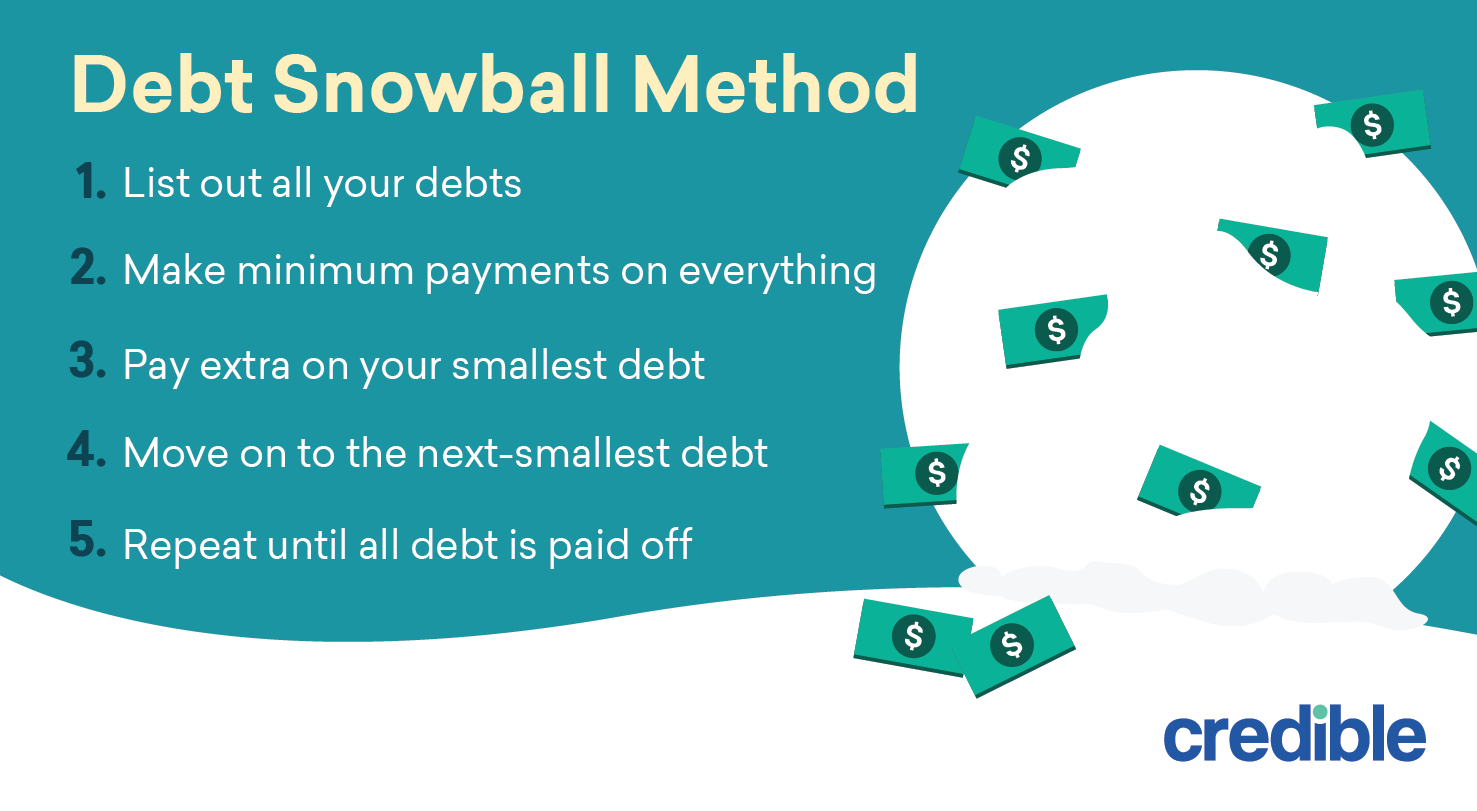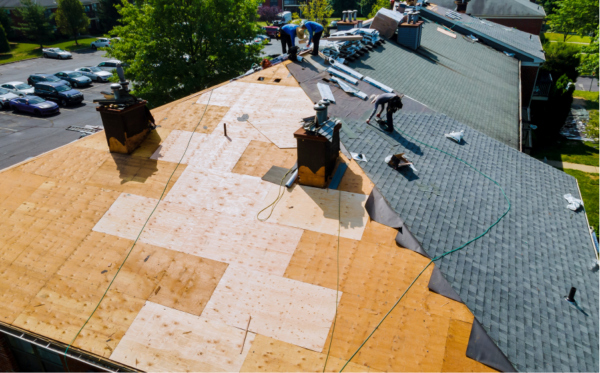Due to the COVID-19 pandemic, payments and interest accrual have been paused on federal student loans by the CARES Act through Jan. 31, 2022.
If you have federal student loans, this means you only have a short time until your payments resume — which is why it’s important to get your finances in shape so you’ll be prepared.
Are you ready to start making federal student loan payments again? Take the quiz below to find out — plus get the chance to win a $50 e-gift card*!
Find Out If You’re Financially Fit
NO PURCHASE NECESSARY TO ENTER OR WIN. The Financially Fit Survey Sweepstakes begins on Oct. 5, 2021 at 12:01 a.m. PT and ends on Oct. 19, 2021 at 11:59 p.m. PT. Open to legal residents of the 50 United States & D.C., who are at least 18 years of age at time of entry. One entry per user. Void where restricted or prohibited by law. See Official Rules for eligibility/ restrictions/ Entry Periods/ prize descriptions and complete details. Void where prohibited. Privacy Policy is located at https://www.credible.com/privacy.
Here are four ways to get financially fit before you start making federal student loan payments again:
Create a budgetRefinance high-interest debtPay down high-interest debtBuild an emergency fund
1. Create a budget
Creating a budget is a great way to track your monthly income and expenses. Additionally, you can see how federal student loan payments will fit into your current budget and make adjustments if necessary.
For example, if your payments will strain your budget, you can look into trimming expenses, such as canceling unused subscriptions.
To set up a budget, you’ll need to:
Calculate your monthly income. This might include traditional employment as well as other non-traditional sources, such as a side hustle.Calculate your monthly expenses. List out your essential expenses (such as rent and utilities) as well as your non-essential spending (such as entertainment or dining out).Subtract your expenses from your income. This amount is the extra room you have in your budget — as well as how much you can afford to pay on your student loans.Tip: Creating a budget can also help you plan for your short-term and long-term financial goals.
For instance, if you want to pay off your student loans in five years, you can check your budget to see how much you can afford to pay on your loans each month and then set a payoff date.
2. Refinance high-interest debt
If you have high-interest debt, you might be able to get a lower interest rate through refinancing. This could save you hundreds or even thousands of dollars on interest — freeing up money in your budget to put toward your student loans.
Or you could opt to extend your repayment term to reduce your monthly payments. Just keep in mind that this means you’ll pay more in interest over time.
Here are a few ways to refinance depending on the kind of debt you have:
Student loan refinancing
Student loan refinancing interest rates are hovering near record lows. If you have private student loans as well as good to excellent credit, you might be able to take advantage of these low rates by refinancing your student loans.
This could save you money on interest and even potentially help you pay off your loans faster.
Keep in mind: While you can refinance both federal and private loans, refinancing federal student loans will cost you access to federal benefits and protections — such as income-driven repayment plans and student loan forgiveness programs.
You’ll also no longer be eligible for the suspension of federal payments and interest accrual under the CARES Act.
If you decide to refinance your student loans, be sure to consider as many lenders as possible to find the right loan for your needs. Credible makes this easy — you can compare your prequalified rates from multiple lenders in two minutes.
Find out if refinancing is right for you
Compare actual rates, not ballpark estimates – Unlock rates from multiple lenders in about 2 minutesWon’t impact credit score – Checking rates on Credible won’t impact your credit scoreData privacy – We don’t sell your information, so you won’t get calls or emails from multiple lendersSee Your Refinancing Options
Credible is 100% free!
Trustpilot
Debt consolidation loan
A debt consolidation loan is a type of personal loan used to pay off various kinds of debt, such as credit cards or other loans. Consolidating your debt will leave you with just one loan and payment to manage, which could make it easier to budget for your student loan payments.
Keep in mind that personal loan interest rates have remained at record lows — so depending on your credit, you might qualify for a lower interest rate than what you’re currently paying.
Balance transfer card
Another way to consolidate credit card debt is with a balance transfer card. With this option, you can move your balance from one credit card to another.
Some balance transfer cards come with a 0% APR introductory offer. This means you could avoid paying interest if you can repay your balance before this period ends.
However, keep in mind that if you can’t pay off the card in time, you could be stuck with some hefty interest charges.
3. Pay down high-interest debt
If you have multiple debts and can’t refinance them for a lower interest rate, you might need to simply concentrate on paying them off as soon as possible.
Repaying some of your debt over the next few months and lessening this strain on your budget could also make it easier to manage federal student loan payments when they resume.
Here are a couple of strategies that might help you do this:
Debt avalanche method
With the debt avalanche method, you’ll focus on paying off your debt with the highest interest rate first. Here’s how it works:

Tip: While the debt avalanche method can be a good way to save money on interest over time, it can also take a while to see your savings.
If you’re more motivated by small wins, you might consider following the debt snowball method instead.
Debt snowball method
If you use the debt snowball method, you’ll start by paying off your smallest debt first. Here’s how it works:

Tip: The debt snowball method typically offers more immediate success, which could be helpful if you’re driven by small wins.
But if you’d rather save more money on interest and don’t mind waiting to see your results, the debt avalanche method might be a better option for you.
4. Build an emergency fund
Having an emergency fund can help you pay for unexpected costs and avoid racking up more debt.
In general, it’s a good idea to save enough in an emergency fund to cover three to six months’ worth of expenses — including student loan payments.
Here are a couple of savings options you might consider:
High-yield savings account: This type of savings account generally offers above-average interest rates. This means you could get a higher rate of return compared to regular savings accounts. Several high-yield savings accounts don’t require an initial deposit, which could be helpful for starting an emergency fund.Money market account: This is another savings option that typically provides a higher rate of return than regular savings accounts. Money market accounts often come with higher initial deposits and maintenance requirements compared to high-yield savings accounts, so could be a good option if you already have some money stashed away.Tip: To get started on your emergency fund, you might save as little as $5 or $10 per week.
As you get used to saving, you can gradually increase the amount you plan to save in your budget.
accordions_header_toggle = “no”;
accordions_click_track = “yes”;
jQuery(document).ready(function($){
wizard_accordion = $(“#accordions-55641.accordions .items”).accordion({
event: “click”,
collapsible:true,
heightStyle: “content”,
animate: (“linear”, 1000),
navigation: true,
active: 999999,
beforeActivate: function(event, ui) {
if (ui.newHeader[0]) {
var currHeader = ui.newHeader;
var currContent = currHeader.next(“.ui-accordion-content”);
} else {
var currHeader = ui.oldHeader;
var currContent = currHeader.next(“.ui-accordion-content”);
}
var isPanelSelected = currHeader.attr(“aria-selected”) == “true”;
currHeader.toggleClass(“ui-corner-all”,isPanelSelected).toggleClass(“accordion-header-active ui-state-active ui-corner-top”,!isPanelSelected).attr(“aria-selected”,((!isPanelSelected).toString()));
currHeader.children(“.ui-icon”).toggleClass(“ui-icon-triangle-1-e”,isPanelSelected).toggleClass(“ui-icon-triangle-1-s”,!isPanelSelected);
currContent.toggleClass(“accordion-content-active”,!isPanelSelected)
if (isPanelSelected) { currContent.slideUp(); } else { currContent.slideDown(); }
return false;
},
changestart: function(event, ui) {
child.accordion(“activate”, false);
}
});
var child = $(“.child-accordion .items”).accordion({
active:true,
beforeActivate: function(event, ui) {
// The accordion believes a panel is being opened
if (ui.newHeader[0]) {
var currHeader = ui.newHeader;
var currContent = currHeader.next(“.ui-accordion-content”);
// The accordion believes a panel is being closed
} else {
var currHeader = ui.oldHeader;
var currContent = currHeader.next(“.ui-accordion-content”);
}
// Since weve changed the default behavior, this detects the actual status
var isPanelSelected = currHeader.attr(“aria-selected”) == “true”;
// Toggle the panels header
currHeader.toggleClass(“ui-corner-all”,isPanelSelected).toggleClass(“accordion-header-active ui-state-active ui-corner-top”,!isPanelSelected).attr(“aria-selected”,((!isPanelSelected).toString()));
// Toggle the panels icon
currHeader.children(“.ui-icon”).toggleClass(“ui-icon-triangle-1-e”,isPanelSelected).toggleClass(“ui-icon-triangle-1-s”,!isPanelSelected);
// Toggle the panels content
currContent.toggleClass(“accordion-content-active”,!isPanelSelected)
if (isPanelSelected) {
currContent.slideUp();
} else {
currContent.slideDown();
}
return false; // Cancels the default action
},
heightStyle: “content”,
collapsible: true,
animated: “swing”,
});
$(“.previous, .next”).click(function () {
var index = 0;
console.log(“gCurrentIndex:”+gCurrentIndex);
console.log(“index:”+index);
if ($(this).hasClass(“next”)) {
index = gCurrentIndex + 1;
if (index > ACCORDION_PANEL_COUNT ) {
index = ACCORDION_PANEL_COUNT;
}
}
else {
index = gCurrentIndex – 1;
if (index
jQuery(document).ready(function($){
$(“#accordions-55641 .expand-collapse”).click(function() {
if( $(this).hasClass(“active”) ) $(this).removeClass(“active”);
else $(this).addClass(“active”);
accordion_id = $(this).attr(“accordion-id”);
$(“#accordions-“+accordion_id+” .ui-accordion-header:not(.ui-state-active)”).next().slideToggle();
});
$(“#accordions-55641 .accordions-head”).click(function () {
toogle_text = $(this).attr(‘toogle-text’);
main_text = $(this).attr(‘main-text’);
if(accordions_header_toggle==’yes’){
if( $(this).hasClass(‘ui-state-active’) ){
if( main_text != null && main_text != ”){
$(this).children(‘.accordions-head-title’).html(main_text);
}
} else {
if( toogle_text != null && toogle_text != ”){
$(this).children(‘.accordions-head-title’).html(toogle_text);
}
}
id = $(this).attr( ‘id’ );
}
if(accordions_click_track==’yes’){
header_id = $(this).attr(‘header_id’);
post_id = $(this).attr(‘post_id’);
$.ajax({
type: ‘POST’,
context: this,
url:accordions_ajax.accordions_ajaxurl,
data: {
“action” : “accordions_ajax_track_header”,
“header_id” : header_id,
“post_id” : post_id,
},
success: function( data ) {>
#accordions-55641 {
text-align: left;
}
#accordions-55641{
background:#ffffff url() repeat scroll 0 0;
padding: 2px;
}
#accordions-55641 .accordions-head{
background:rgba(255,255,255, 1) none repeat scroll 0 0;
margin:0px 0px 0px -12px;
padding:7px 7px 7px 0px;
}
#accordions-55641 .accordions-head-title{
color:#202022;
font-size:13px;
font-family:;
}
#accordions-55641 .accordions-head-title-toogle{
color:#202022;
font-size:13px;
}
#accordions-55641 .accordions-head:hover .accordions-head-title{
color:#202022;
}
#accordions-55641 .ui-state-active{
background: #ffffff;
}
#accordions-55641 .accordion-content{
background:rgba(255,255,255,1) none repeat scroll 0 0;
color:#202022;
font-size:18px;
font-family:;
margin:5px 5px 5px -5px;
padding:3px;
}
#accordions-55641 .accordion-icons{
color:#6dc3a8;
font-size:18px;
padding:0px;
background: ;
}
#accordions-55641 .accordions-head:hover .accordion-icons{
color:#6dc3a8;
}
#accordions-55641 .expand-collapse{
}
@media screen and (min-width: 1200px) {
#accordions-55641 {
width: 100%;
}
}
@media screen and (max-width:1199px) and (min-width: 768px) {
#accordions-55641 {
width: 100%;
}
}
@media screen and (max-width: 767px) {
#accordions-55641 {
width: 100%;
}
}
.accordions-head-title {
font-family: “Open Sans”, sans-serif;
}
.accordion-content {
font-family: “Open Sans”, sans-serif;
}
.accordion-content p {
line-height: 1.7 !important;
margin-top: .5em;
}
.ui-helper-reset {
line-height: 1.7 !important;
}
.accordions .accordions-head {
align-items: baseline;
}
.accordion-icons {
top: -.125em;
}
.accordions-head-title h3 {
margin-top: 0;
font-weight: 600;
}
.ui-widget-content a {
color: #4eb696 !important;>
jQuery(document).ready(function($){
jQuery(document).on(‘keyup’, ‘#search-input-55641 input.search-input’, function(){
keyword = jQuery(this).val().toLowerCase();
content_head = [];
content_body = [];
$(‘#accordions-55641 .items .accordions-head-title’).each(function( index ) {
content = $( this ).text().toLowerCase();
content_head[index] = content;
$( this ).parent().removeClass(“accordion-header-active”);
$( this ).parent().removeClass(“ui-state-active”);
});
$(‘#accordions-55641 .items .accordion-content’).each(function( index ) {
$( this ).hide();
content = $( this ).text().toLowerCase();
content_body[index] = content + ‘ ‘ + content_head[index];
n = content_body[index].indexOf(keyword);
if(nFinancially Fit Survey Sweepstakes
Official Sweepstakes Rules
Financially Fit Survey Sweepstakes
Official Sweepstakes Rules
NO PURCHASE OR PAYMENT NECESSARY TO ENTER OR WIN. MAKING A PURCHASE DOES NOT INCREASE YOUR CHANCES OF WINNING.
The following promotion is intended for participants in the fifty (50) United States and Washington D.C. only and shall be construed and evaluated according to the laws of the United States. Do not proceed in this promotion if you are not a legal U.S. resident residing in the fifty (50) United States or Washington D.C. Further eligibility restrictions are contained in the official rules below.
1. SWEEPSTAKES DESCRIPTION: The Financially Fit Survey Sweepstakes begins on Oct. 5, 2021 at 12:01 a.m. PT and ends on Oct. 19, 2021 at 11:59 p.m. PT.
The sponsor of this Sweepstakes is Credible Labs, Inc. (“Sponsor”). Sweepstakes void where prohibited or restricted by law. THIS SWEEPSTAKES IS IN NO WAY SPONSORED, ENDORSED, ADMINISTERED BY, OR ASSOCIATED WITH TWITTER OR INSTAGRAM.
2. ELIGIBILITY: The Sweepstakes is open only to legal residents of the fifty (50) United States and the District of Columbia who are physically located and residing therein and who are at least eighteen (18) years of age and the age of majority in their state of primary residence at the time of entry (“Entrant”). Entrants are limited to one entry each. Employees, shareholders, officers, directors, agents, and representatives of Sponsor, Presenter, Administrator (collectively, “Sweepstakes Entities“), and each of their respective parent companies, affiliates, divisions, subsidiaries, agents, representatives and promotion and advertising agencies are not eligible to participate in the Sweepstakes. Immediate family and household members of such individuals are also not eligible to enter or win. For purposes of the Sweepstakes “household members” shall mean those people who share the same residence at least three months a year and “immediate family members” shall mean parents, step-parents, legal guardians, children, step-children, siblings, step-siblings, or spouses. Void in Puerto Rico, all U.S. territories and possessions and overseas military installations, and where prohibited.
3. HOW TO ENTER: During the Entry Period, eligible Entrants may participate by completing the Financially Fit survey.
Online Entry:
Entrant must complete the following steps for Online Entry:
Visit https://hxfu0nh43pu.typeform.com/finance-quiz (the “WebsiteFollow the onscreen instructions to complete the survey.Affirmatively accept the Official Rules and click “Enter”.
Limit one (1) Submission per Entrant, per Entry Period. Any attempt by an Entrant to obtain more than the stated number of entries by using multiple/different identities, registrations, logins, and/or any other methods will void such Entrant’s Submission and that Entrant may be disqualified from the Sweepstakes.
Entries generated by a script, macro or other automated means will be disqualified. Incomplete, unreadable, or unintelligible entries will be disqualified. ELIGIBLE ENTRANTS MUST SUBMIT THEIR ENTRY IN ACCORDANCE WITH THESE OFFICIAL RULES. NO ALTERNATE FORM OF ENTRY WILL BE ACCEPTED. Participation in the Sweepstakes constitutes Entrant’s understanding of and full and unconditional agreement to and acceptance of these Official Rules. Sweepstakes Entities reserve the right to disqualify any Entrant that they determine to be in violation of any term contained in these Official Rules. Sweepstakes Entities reserve the right to move, change or extend deadlines or dates in their sole discretion. Such changes, if applicable, will be communicated on the Website, on the Sponsor’s Instagram account, and on the Sponsor’s Twitter account.
4. WINNER SELECTION & NOTIFICATION: Following the conclusion of each Entry Period, in accordance with the dates and times as detailed in the Entry Period Chart above, Administrator will randomly select one (1) potential winner from all eligible entries for the corresponding Entry Period. Potential winner notification will vary according to the channel of Sweepstakes entry:
Online Entry
If the potential winner entered via Online Entry, he or she will be contacted via the email address provided on the entry form.
Winners will be responsible for any and all federal, state and/or local taxes resulting from acceptance of the Prize. No cash or prize substitution is allowed except at the discretion of Sweepstakes Entities. If a prize cannot be awarded due to circumstances beyond the control of the Sweepstakes Entities, a substitute prize of equal or greater retail value may be awarded; provided, however, that if Prizes are awarded but unclaimed/forfeited by recipient, Prize may not be re-awarded, in Sweepstakes Entities’ sole discretion. Other restrictions may apply.
5. CONDITIONS OF PARTICIPATION/RELEASES: All federal, state and local laws and regulations apply. By participating, each Entrant agrees to be bound by these Official Sweepstakes Rules and the decisions of the Sweepstakes Entities, which shall be final in all respects. By participating in this Sweepstakes and/or by accepting any prize that they may win, each Entrant agrees to release and indemnify the Sweepstakes Entities; each of their respective parent, subsidiary and affiliated companies, units and divisions and advertising and promotional agencies and Prize suppliers; each of their respective officers, directors, agents, representatives and employees; and each of these companies and individuals’ respective successors, representatives and assigns (collectively, the “Released Parties“) from any and all actions, claims, injury, loss or damage arising in any manner, directly or indirectly, from participation in this Sweepstakes and/or acceptance, use, or misuse of any prize. Acceptance of a prize authorizes the Sponsor, Presenter and their designees to use each winner’s Social Media handle, Social Media profile picture, name, voice, likeness, biographical data, city and state of residence in programming or promotional material, throughout the universe in perpetuity, or on a winner’s list, if applicable, without further compensation unless prohibited by law. By entering the Sweepstakes, Entrants agree that: (1) any and all disputes, claims, and causes of action arising out of or connected with the Sweepstakes, or any prizes awarded, shall be resolved individually, without resort to any form of class action; (2) any and all claims, judgments and awards shall be limited to actual out-of-pocket costs incurred, including costs associated with entering the Sweepstakes, but in no event will Entrant’s attorneys’ fees be awarded or recoverable; and (3) under no circumstances will any Entrant be permitted to obtain any award for, and Entrant hereby knowingly and expressly waives all rights to seek, punitive, incidental or consequential damages and/or any other damages, other than actual out-of-pocket expenses, and/or any and all rights to have damages multiplied or otherwise increased. The Released Parties shall not be liable for: (i) late, lost, delayed, stolen, misdirected, postage-due, incomplete, unreadable, inaccurate, garbled or unintelligible entries, communications or affidavits, regardless of the method of transmission; (ii) telephone system, telephone or computer hardware, software or other technical or computer malfunctions, lost connections, disconnections, delays or transmission errors; (iii) data corruption, theft, destruction, unauthorized access to or alteration of entry or other materials; (iv) any injuries, losses or damages of any kind caused by the prize or resulting from acceptance, possession, use or misuse of a prize, or from participation in the Sweepstakes; (v) the Entrant’s claim that he or she has somehow been defamed or portrayed in a false light or (vi) any printing, typographical, human administrative or technological errors in any materials associated with the Sweepstakes. The Released Parties assume no responsibility for any damage to an Entrant’s computer system, or for any computer system, phone line, hardware, software or program malfunctions, or other errors, failures, delayed computer transmissions or network connections that are human or technical in nature, or for the incorrect or inaccurate capture of information, or the failure to capture any information. Sweepstakes Entities reserve the right, in their sole discretion, to cancel, modify or suspend the Sweepstakes (or any portion of the Sweepstakes) should a virus, bug, computer problem, unauthorized intervention or other cause or problem corrupt or inhibit the administration, security or proper play of the Sweepstakes and, in such situation, to select the Winner from eligible non-suspect entries received prior to and/or after such action or in such manner as deemed fair and appropriate by the Sweepstakes Entities. Sweepstakes Entities may prohibit you from participating in the Sweepstakes or winning a Prize if, in their sole discretion, they determine you are attempting to undermine the legitimate operation of the Sweepstakes by cheating, hacking, deception, or any other unfair playing practices of intending to annoy, abuse, threaten or harass any other Entrants or the Released Parties representatives.
6. GOVERNING LAW: ALL ISSUES AND QUESTIONS CONCERNING THE CONSTRUCTION, VALIDITY, INTERPRETATION AND ENFORCEABILITY OF THESE OFFICIAL RULES, OR THE RIGHTS AND OBLIGATIONS OF ENTRANTS OR THE RELEASED PARTIES IN CONNECTION WITH THE SWEEPSTAKES OR IN CONNECTION WITH ANY SUBMISSION OR OTHER MATERIAL SUBMITTED IN CONNECTION WITH THE SWEEPSTAKES, SHALL BE GOVERNED BY AND CONSTRUED IN ACCORDANCE WITH THE INTERNAL LAWS OF THE STATE OF CALIFORNIA WITHOUT GIVING EFFECT TO ANY CHOICE OF LAW OF CONFLICT OF LAW RULES OR PROVISIONS THAT WOULD CAUSE THE APPLICATION OF ANY OTHER STATE’S LAWS. THE INVALIDITY OR UNENFORCEABILITY OF ANY PROVISION OF THESE RULES SHALL NOT AFFECT THE VALIDITY OR ENFORCEABILITY OF ANY OTHER PROVISION. IN THE EVENT THAT ANY PROVISION IS DETERMINED TO BE INVALID OR OTHERWISE UNENFORCEABLE OR ILLEGAL, THESE RULES SHALL OTHERWISE REMAIN IN EFFECT AND SHALL BE CONSTRUED IN ACCORDANCE WITH THEIR TERMS AS IF THE INVALID OR ILLEGAL PROVISION WERE NOT CONTAINED HEREIN.
IN NO EVENT WILL THE RELEASED PARTIES, THEIR RESPECTIVE PARENT, AFFILIATES, SUBSIDIARIES AND RELATED COMPANIES, THEIR ADVERTISING OR PROMOTION AGENCIES, WEB MASTERS/SUPPLIERS, VENDORS, CONTRACTORS OR EACH OF THEIR RESPECTIVE OFFICERS, DIRECTORS, EMPLOYEES, SHAREHOLDERS, MEMBERS, SUCCESSORS, ASSIGNS, REPRESENTATIVES AND AGENTS BE RESPONSIBLE OR LIABLE FOR ANY DAMAGES OR LOSSES OF ANY KIND, INCLUDING DIRECT, INDIRECT, INCIDENTAL, CONSEQUENTIAL OR PUNITIVE DAMAGES ARISING OUT OF ENTRANT’S PARTICIPATION IN THE SWEEPSTAKES. WITHOUT LIMITING THE FOREGOING, ALL PRIZES AND THE SWEEPSTAKES ARE PROVIDED “AS IS,” WITHOUT WARRANTY OF ANY KIND, EITHER EXPRESS OR IMPLIED, AND THE SWEEPSTAKES ENTITIES HEREBY EXPRESSLY DISCLAIM ALL IMPLIED WARRANTIES, INCLUDING, BUT NOT LIMITED TO, IMPLIED WARRANTIES OF MERCHANTABILITY, FITNESS FOR A PARTICULAR PURPOSE OR NON-INFRINGEMENT SOME JURISDICTIONS MAY NOT ALLOW LIMITATIONS OR EXCLUSION OF LIABILITY FOR INCIDENTAL OR CONSEQUENTIAL DAMAGES OR EXCLUSION OF IMPLIED WARRANTIES, SO SOME OF THE ABOVE LIMITATIONS OR EXCLUSIONS MAY NOT APPLY TO YOU. CHECK YOUR LOCAL LAWS FOR ANY RESTRICTIONS OR LIMITATIONS REGARDING THESE LIMITATIONS OR EXCLUSIONS. CAUTION: ANY ATTEMPT TO DELIBERATELY DAMAGE OR UNDERMINE THE LEGITIMATE OPERATION OF THE SWEEPSTAKES MAY BE A VIOLATION OF CRIMINAL AND CIVIL LAWS AND SHOULD SUCH AN ATTEMPT BE MADE, THE RIGHT IS RESERVED TO SEEK DAMAGES TO THE FULLEST EXTENT OF THE LAW.
7. ARBITRATION PROVISION: By participating in this Sweepstakes, each Entrant agrees that any and all disputes the Entrant may have with, or claims Entrant may have against, the Released Parties relating to, arising out of or connected in any way with (i) the Sweepstakes, (ii) the awarding or redemption of any prize, and/or (iii) the determination of the scope or applicability of this agreement to arbitrate, will be resolved individually and exclusively by final and binding arbitration administered by the National Arbitration Forum (the “Forum”) and conducted before a sole arbitrator pursuant to the Code of Procedure established by the Forum. The arbitration shall be held at a location determined by the Forum pursuant to the Code of Procedure, or at such other location as may be mutually agreed upon by the Entrant and Sponsor. The arbitrator’s decision shall be controlled by the terms and conditions of these Official Rules and any of the other agreements referenced herein that the applicable Entrant may have entered into in connection with the Sweepstakes. There shall be no authority for any claims to be arbitrated on a class or representative basis; arbitration can decide only the Entrant’s and/or Sponsor’s individual claims and the arbitrator may not consolidate or join the claims of other persons or parties who may be similarly situated. The arbitrator shall not have the power to award special or punitive damages against the Entrant or Released Parties. For more information on the Forum and/or the Forum’s Code of Procedure, please visit their website at www.arb-forum.com. If any part of this Arbitration Provision is deemed to be invalid or otherwise unenforceable or illegal, the balance of this Arbitration Provision shall remain in effect and shall be construed in accordance with its terms as if the invalid or illegal provision were not contained herein.
8. PRIVACY POLICY: Any personal information supplied by you to Sponsor will be subject to Sponsor’s privacy policy posted at [URL] By entering the Sweepstakes, you grant Sponsor permission to share your social media handle, email address and any other personally identifiable information with the other Sweepstakes Entities for the purpose of Sweepstakes administration and prize fulfillment. Sponsor will not sell, rent, transfer or otherwise disclose your personal data to any third party other than as described herein or in accordance with Sponsor’s privacy policy.
9. SPONSOR: Credible Labs, Inc. 115 Sansome Street, Suite 600, San Francisco, CA 94104
The Sweepstakes is in no way sponsored, endorsed or administered by Instagram or Twitter. Instagram and Twitter are completely released of all liability by each Entrant in this Sweepstakes.
The post 4 Steps to Becoming Finance Fit appeared first on Credible.
Did you miss our previous article…
https://corazoncrm.org/?p=245



































